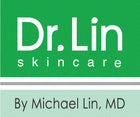What are UVA and UVB Rays?
Summer is here and whether you are inside or outside, it is important to understand how the sun’s rays can affect your skin. What is the difference between UVA and UVB rays, and how much sun is too much?
UV radiation is a component of the electromagnetic radiation spectrum that reaches the earth from the sun. It has wavelengths shorter than visible light, making it invisible to the naked eye. These wavelengths are classified as UVA,UVB and UVC. Both UVA and UVB enter the atmosphere and play a vital role in conditions such as premature skin aging, eye damage (including cataracts), and skin cancers. They also affect the immune system, reducing your ability to combat these and other conditions. UVC wavelengths have extrmely short wavelengths and are almost completely absorbed by the Ozone layer thus having little biological significance.
UVA
Most of us are exposed to large amounts of UVA throughout our life. UVA rays account for up to 90-95% of the UV radiation reaching the Earth’s surface. UVA penetrates the skin more deeply than UVB, and UVA can also contribute to and may even initiate the development of skin cancers. Although they contain less energy than UVB, UVA rays are 30 to 50 times more prevalent. UVA rays can penetrate glass and clouds and are present with equal intensity during all daylight hours through the year. Over-exposure to UVA rays can lead to pre-mature aging, and to some extent, skin cancer.
UVB
UVB, is the chief cause of skin reddening and sunburn and it tends to damage the skin’s epidermal layers. It plays a key role in the development of skin cancer and a contributory role in tanning and photoaging. UVB’s intensity can vary by season, location, and time of day. The most significant amount of UVB hits the U.S. between 10 AM and 4 PM from April to October. It’s important to note that, UVB rays can burn and damage your skin year-round, particularly at high altitudes and on reflective surfaces such as snow or ice. UVB rays can bounce back up to an amount of 80 percent of rays so that they can strike the skin twice. UVB rays do not significantly penetrate glass.
Check out the chart below for quick and easy information on UVA & UVB rays:

So remember to protect your face and body at all times from the sun’s rays, both UVA and UVB. Check out Dr. Lin's sunscreens here!
What are your thoughts on UVA and UVB rays?


Leave a comment